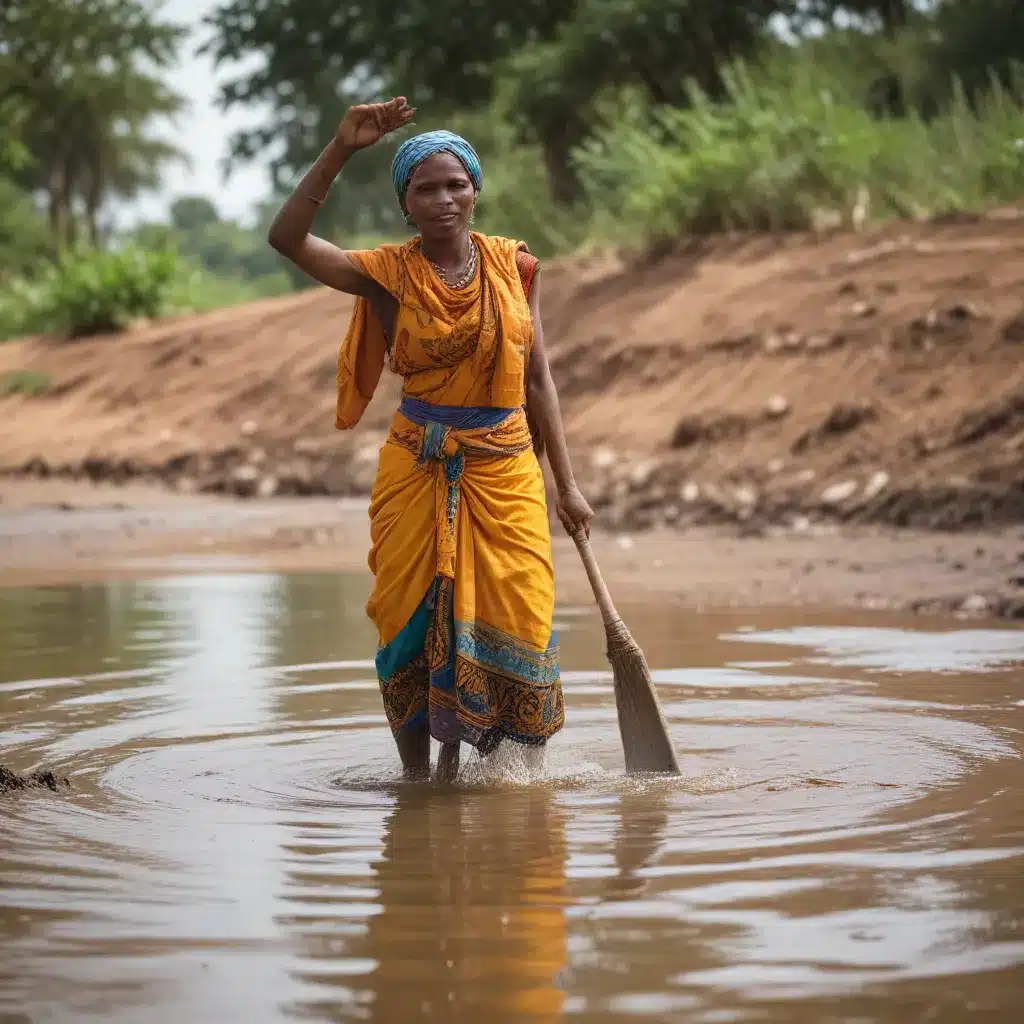
Empowering Women to Lead the Fight Against the Water Crisis
Women and girls play a critical role in addressing the global water crisis, and yet they are often the ones most vulnerable to the devastating impacts of water scarcity, pollution, and climate change. As seasoned experts in water and sanitation services, community engagement, and advocacy, we must elevate the voices and experiences of women to develop holistic, equitable solutions.
The intersection of water, gender, and climate change is a complex challenge, but one that presents immense opportunities for transformative change. By empowering women as leaders and agents of change, we can build more resilient, sustainable communities that are better equipped to tackle the water crisis.
Recognizing the Disproportionate Impacts on Women
Around the world, women and girls bear the brunt of the water crisis. In many communities, they are responsible for collecting water for their households, a task that can become increasingly dangerous and time-consuming as water sources become scarce or contaminated due to climate change. The UN reports that women and girls spend 200 million hours per day collecting water. This time burden limits their ability to pursue education, economic opportunities, and other activities that could improve their well-being and that of their families.
Climate change also exacerbates existing gender inequalities. Women are more likely to experience food insecurity, malnutrition, and health issues stemming from water-borne diseases – all of which disproportionately impact women, especially those who are pregnant or breastfeeding. Furthermore, the stress and displacement caused by climate-related disasters can increase the risk of gender-based violence for women and girls.
Empowering Women as Leaders and Agents of Change
Despite these challenges, women are at the forefront of driving innovative, community-based solutions to the water crisis. From implementing sustainable water management practices to advocating for policy change, women are using their unique perspectives and knowledge to build more resilient and equitable water systems.
For example, in Bangladesh, women are leading efforts to restore degraded mangrove forests, which act as natural barriers against coastal flooding and erosion. The Sundarbans Women Eco-Guardians project has trained over 1,000 women to monitor and protect these critical ecosystems, empowering them as stewards of their local environment.
In Kenya, the Laikipia Permaculture Centre is run by women who are teaching sustainable agricultural techniques to their communities. By integrating water conservation, soil health, and biodiversity into their farming practices, these women are improving household food security and incomes while safeguarding precious water resources.
Integrating Gender Equity into Water and Climate Policies
To truly address the intersection of water, gender, and climate change, we must ensure that the needs and perspectives of women and girls are integrated into water and climate policies at all levels of government. This involves:
-
Increasing women’s participation in decision-making processes: Women must have a seat at the table when it comes to developing strategies and solutions for water management and climate adaptation. Providing leadership training, mentorship, and networking opportunities can empower more women to step into influential roles.
-
Addressing gender-specific barriers: Policies must tackle the socioeconomic, cultural, and political obstacles that prevent women from accessing water, sanitation, and other critical resources. This includes improving women’s land and property rights, access to finance, and participation in the water and climate workforce.
-
Investing in gender-responsive programming: Water, sanitation, and climate initiatives should be designed with the unique needs of women and girls in mind. This could involve improving access to menstrual hygiene products, providing childcare support, or targeting women-led businesses for green job opportunities.
-
Strengthening gender-disaggregated data collection: Policymakers and practitioners require robust, sex-disaggregated data to understand the differentiated impacts of the water crisis and climate change on women and men. Investing in inclusive research and monitoring can inform more effective, equitable solutions.
Spotlight on Gender-Responsive Budgeting
One powerful tool for integrating gender equity into water and climate policies is gender-responsive budgeting (GRB). GRB involves analyzing government budgets through a gender lens to ensure that public resources are allocated and managed in ways that address the needs and priorities of women and men equally.
For example, the government of Bangladesh has been a pioneer in implementing GRB, with over 34% of the national budget allocated to initiatives that promote women’s development in the 2023-2024 fiscal year. These investments have contributed to significant progress in areas such as women’s education, health, and political participation.
However, there is still room for improvement. Strengthening the impact evaluation of GRB initiatives, expanding the approach to local governments, and integrating gender considerations into revenue policies could make Bangladesh’s budgeting process even more effective at driving equitable, sustainable development.
Empowering Women, Transforming Communities
When we empower women as leaders and change-makers in the water and climate sectors, we unlock immense potential for more resilient, inclusive, and sustainable communities. By amplifying women’s voices, addressing their unique needs, and leveraging their invaluable knowledge and expertise, we can develop holistic solutions that benefit all.
At Joint Action for Water, we are committed to partnering with women-led organizations, supporting gender-responsive programming, and advocating for policy frameworks that put women at the center of water and climate action. Together, we can build a future where every person, regardless of gender, has access to the clean water, sanitation, and environmental resources they need to thrive.
Join us in this transformative journey. Visit https://jointactionforwater.org/ to learn more and get involved.

